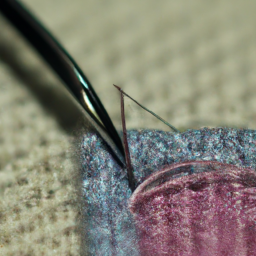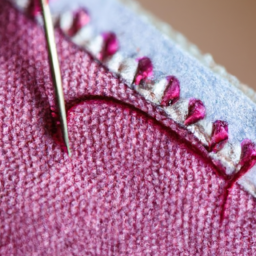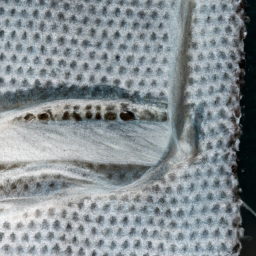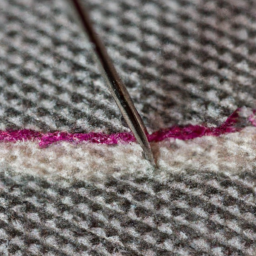
Stitches for Slow Stitching
In today’s modern, fast-paced world, finding moments of calm and relaxation is becoming increasingly important. Slow stitching, an art form that focuses on the meditative process of embroidery, has gained popularity as a way to unwind and reconnect with a more mindful way of creating.

As you delve into the world of slow stitching, learning different embroidery stitches is essential to express your creativity and bring your designs to life. Here are some popular stitches you can explore:
-
Running Stitch:
A basic stitch done by passing the needle in and out of the fabric in a straight line. It creates a dashed line effect and is often used as a foundation for other stitches.
-
Backstitch:
A strong and versatile stitch formed by creating overlapping stitches. It is great for outlining shapes or creating precise lines.
-
French Knot:
A decorative stitch that forms a small, raised knot on the fabric surface. It adds texture and can be used to create captivating details, such as flower centers or eyes.
-
Lazy Daisy Stitch:
A lovely stitch that creates petal or leaf shapes on your fabric. It consists of a series of detached chain stitches arranged in a circular or curved manner.
“Embroidery is calming and focuses your mind. It is a type of therapy. The repetitive motions help create a sense of calm similar to that experienced during meditation.” – Anonymous
Slow stitching is not just about the end result; it’s the journey that matters. Repeatedly working these stitches, embracing imperfections, and letting your creativity guide you can lead to a deeply relaxing and personally fulfilling experience.





Great tutorial! #SlowStitching
#SlowStitching is such a calming and rewarding form of crafting! Anyone looking for a project that slows down and soothes the soul should check out this tutorial – it’s definitely worth a try!